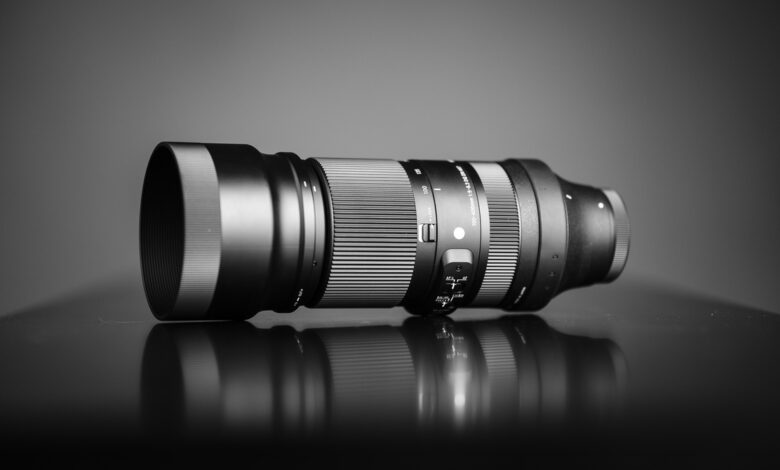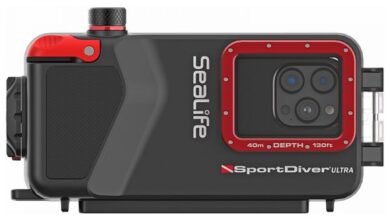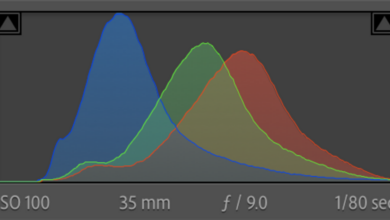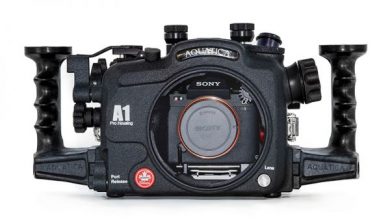Decent but Flawed: We Review The Sigma 100-400mm f/5-6.3 DG DN OS Contemporary Lens for Fujifilm X

The zoom telephoto lens pool for Fujifilm X mount is growing larger each year, and that can only be a good thing. Fujifilm already offers multiple great candidates. Tamron and Sigma are also getting involved as they too want a piece of the pie. Do they stack up? The Tamron 150-500mm certainly does, but how about the Sigma? Let’s have a look!
Decently Built
I’ve been given a solid number of Sigma lenses to test out over the years. More often than not, I am delighted with them, as they offer a really nice blend of decent image quality and a very manageable price tag. I’ve been known to praise the recently released f/1.4 DC DN primes for their very competitive image properties, compact sizes, and more than affordable price range. The latest piece of glass, however, leaves me rather stumped. I can’t quite recommend it to most users, but I can’t truly discourage anyone from getting it either. It does have merits, but it does come with some, for me at least, pretty unfortunate flaws.
Let’s get the basics out of the way first, though. The Sigma 100-400mm f/5-6.3 DG DN OS Contemporary lens is mostly comparable to the Fujifilm XF 100-400mm f/4.5-5.6 R LM OIS WR. The price of the Sigma is currently roughly $1,000 less than the Fujifilm, not taking time-limited deals into account, and it does save on both the size and weight, but it does so at the cost of a smaller aperture and a lack of few features. The body of the lens measures less than 20 centimeters in length and weighs a little over a kilogram. That is less than eight inches and just around three pounds for my American friends. Not too big, not too heavy.
I’m pretty sure the outer materials used play a role in that. Yes, the lens is plastic on the outside but still fairly sturdy and seemingly built well. On the outside, it does seem weather-resistant, but I could not find any official confirmation of such a feature apart from the mount having a rubber gasket, which Sigma even mentions on their website. No word on the rest of the lens being sealed, though. Something tells me it unofficially is, but it’s not claimed anywhere in writing to prevent any legal issues from misuse.
The design is fairly simple yet not boring. The barrel is dominated by a few standout features. First is a rubberized large counter-clockwise zoom ring with a just-right travel length. All you need is a quarter twist to get from the widest 100mm to the longest 400mm. I certainly welcome not having to twist my hand all around the lens to utilize it fully. This is not the only way to change your focal length, though. You can also just grab the hood on the back section and simply pull it to zoom. This can speed up your tracking significantly and is officially supported by Sigma, so no need to worry about ruining the lens.
The plastic focusing ring is unassuming, and to be fair, it will most likely never see use from the majority of its owners. The lack of an aperture ring is unfortunate but expected when it comes to X-mount Sigma glass. It shouldn’t be much of a downside to most Fujifilm shooters, but X-H2(S) owners have to take into account that if they work in manual mode they now need to switch between aperture and ISO on one of their control wheels as those cameras only offer two wheels.
We can attach a tripod collar, but it is not included in the box by default. The mounting point is covered by a removable rubber ring. Last but not least are the controls on the left side of the barrel. We get the traditional stabilizer switch with two separate modes, a very welcome focus distance limiter, and a button that can either work as your AF button or an AF-L one. We also get a zoom lock incorporated into the zoom ring to avoid creeping of the front element when traveling, as the lens does extrude when zooming in.
How About the Internals?
The aperture mechanism consists of nine rounded blades, same as the more premium Fujifilm XF lens. However, the Sigma does firstly focus closer at 1.1 meters (3.61‘) compared to Fujifilm’s 1.75m (5.74′). The magnification is also slightly better at 0.24x compared to 0.19x of the Fujifilm counterpart. The focusing group is driven by a silent and fairly quick stepping motor, which is neither a disadvantage nor an advantage over the linear motor of the XF 100-400. I’d like to say that the focus was fast and accurate, but this is where the first issues arise. Yes, the lens did focus fast, or at least it confirmed an accurate acquisition quickly. But on an occasion here and there, the final image just was not in focus when viewed up close. I can’t with 100% certainty say whether it’s focus or optical quality, though.
It shouldn’t be an issue. We’re using a full frame-capable lens on an APS-C body, ignoring the weakest spots of any glass, the corners, and utilizing only the sharp center of the image circle. And more often than not, I was getting tack-sharp captures on my X-T5 with its 40-megapixel X-Trans 5 HR sensor. But that was mostly when I used any other focal length apart from the shortest and longest. If I took a shot at a random length like 174mm, or 265mm, the image came out perfect. But once I shot the image at either 100mm or 400mm around half of my images just weren’t as sharp as I’d like them to be. It most likely wasn’t a focusing issue from what I’ve tested. I’ve used single AF, continuous tracking, and face detection, and the results were the same. But as I’ve said before, I wouldn’t bet any money on who is the culprit. It could’ve been just the unit I was using as there are other reviews out there that never mentioned any such issues, but I’d be lying if I omitted it from this article.
Ignoring the few soft images I got, the sharp ones were definitely worth keeping. The definition was good enough for the high-resolution sensor of my camera, the colors and contrast were captured rather nicely, and I was more than satisfied with the way Sigma handled chromatic aberrations and LoCA. Even the bokeh was lovely and smooth thanks to the 9-bladed rounded diaphragm. The separation of the subject from the foreground and the background is clear and pleasing.
What I Liked
- Manageable weight
- Short zoom ring travel
- Pull/push to zoom feature
- Image stabilization
- Focus limiter
- Relatively compact size
- Fast stepping motor
What I Disliked
- Occasional soft image
- Lack of aperture ring
- Not officially weather-sealed
Would I buy it?
It is not an easy call. The size and weight of the Sigma 100-400mm f/5-6.3 DG DN OS Contemporary both make it a very comfortable piece of gear to carry around even on a smaller body such as the X-T5. The fast zoom makes it great for shooting quickly moving subjects and the build including the controls makes the lens feel high quality. Optically it also performed well, when it performed. But the occasional soft image made me cautious of my focal length. I had to make sure to not use the extreme ends of the focal range to get the best out of the lens which is not something I’d like to have to constantly think about when shooting. I’d most definitely recommend testing the lens thoroughly to see if it’s a good fit for you. I will most likely try using a different unit to see if my worries are unfounded and if it turns out to be true, I’ll let you know in this article or the comments.
Speaking of the comments, do you own the lens? Have you used it? How satisfied are you with the image quality?
Samples




